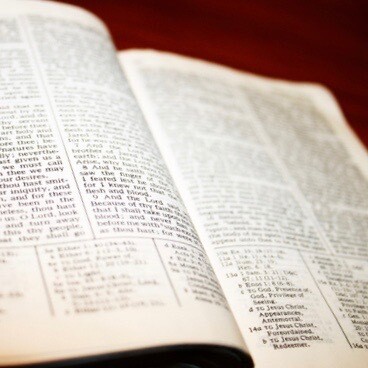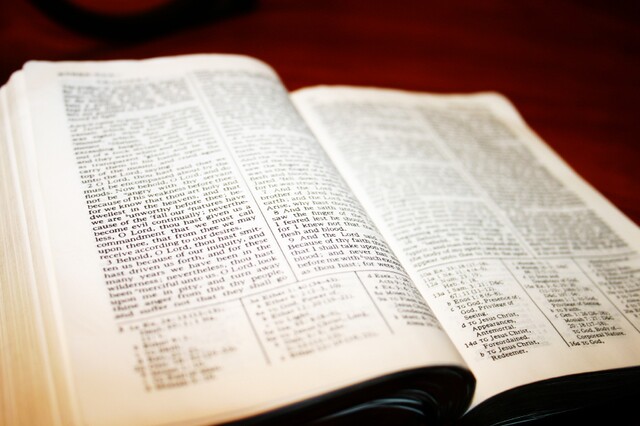Michael Coe, Yale University’s Charles J. MacCurdy professor emeritus of anthropology, is an eminent scholar of ancient Mesoamerica and the author of a widely read book, The Maya, that is now in its ninth edition.
Coe is also a prominent skeptic regarding the Book of Mormon. However, a recently published article in Interpreter: A Journal of Latter-day Saint Faith and Scholarship contends that his book itself contains strong evidence that favors the Book of Mormon—evidence that Coe has not taken into account. (Full disclosure: I am the president of the Interpreter Foundation board of trustees.)
“Joseph Smith: The World’s Greatest Guesser,” by Bruce Dale and Brian Dale, examines that evidence, using Bayesian statistical analysis. Bruce Dale, a chemical engineer, is a University Distinguished Professor at Michigan State University. His son, Dr. Brian Dale, is a biomedical engineer in the private sector who frequently employs Bayesian analysis.
In order to counter any bias in favor of the Book of Mormon, the authors apply a strongly skeptical prior assumption that the Book of Mormon “has little to do with early Indian cultures,” precisely as Coe claims. They then compare 131 separate positive correspondences or points of evidence between the Book of Mormon and Coe’s book. They also analyze negative points of evidence not only between the Book of Mormon and The Maya but between the Book of Mormon and a 1973 article published by Coe in Dialogue and between the Book of Mormon and several podcast interviews with Coe by a prominent critic of the Church.
After using Bayesian methodology to analyze both positive and negative correspondences, the authors reach an enormously strong conclusion. There is, they announce, overwhelming evidence that the Book of Mormon has physical, political, geographical, religious, military, technological, and cultural roots in ancient Mesoamerica.
“We find,” the authors write, “that the likelihood that the Book of Mormon is fictional is about 1.03 x 10^-111, less than one in a thousand, billion, billion, billion, billion, billion, billion, billion, billion, billion, billion, billion, billion.”
“Just how small a number is this?” they ask. “No easily grasped comparisons are possible. The mass of the smallest known particle, the neutrino, is about 10^-36 kg, while the mass of the observable universe is about 10^52 kg. Thus the ratio of the mass of the neutrino to the mass of the entire universe is approximately 10^-88. This ratio, the mass of the neutrino to the mass of the universe, is still one hundred thousand, billion, billion times greater than the odds that the Book of Mormon is a work of fiction.”
As a control, they have also analyzed two other books, both dating from the early 19th century, that treat the origins of ancient American Indians: Ethan Smith’s View of the Hebrews and Solomon Spalding’s Manuscript Found. They compare both books with The Maya using identical statistical methodology, and conclude that neither book describes peoples and places similar to those described in The Maya.
“Dr. Coe,” they observe, “seems to share the opinion that Joseph Smith was influenced by then-popular ideas such as those found in View of the Hebrews and Manuscript Found. He views the Book of Mormon as 'an amalgamation of the rumors and myths, and understandings about Native Americans' existing at the time. Coe states that the Book of Mormon was 'in the air' when it was published.”
“Well, if so, how did Joseph Smith avoid breathing in so much bad air? Wrong guesses about ancient Indian cultures abound in Manuscript Found and View of the Hebrews. How did Joseph Smith manage to avoid making those wrong guesses? And how did Joseph Smith manage to 'guess' so much that was overwhelmingly correct?”
Thus Coe’s opinion: “The picture of this hemisphere between 2000 BC and AD 421 presented in the Book of Mormon has little to do with early Indian cultures” is simply not supported by the evidence provided in his own book. Using Coe’s own book, we find that early Mesoamerica has a very great deal indeed to do with the Book of Mormon. The cumulative weight of these correspondences, analyzed using Bayesian statistics, provides overwhelming support for the historicity of the Book of Mormon as an authentic, factual record set in ancient Mesoamerica.”
That’s a strong conclusion. For the argument behind it, see Bruce E. Dale and Brian M. Dale, “Joseph Smith: The World’s Greatest Guesser (A Bayesian Statistical Analysis of Positive and Negative Correspondences between the Book of Mormon and ‘The Maya’),” Interpreter31 (2019) 77-186:
Daniel Peterson teaches Arabic studies, founded BYU’s Middle Eastern Texts Initiative, directs MormonScholarsTestify.org, chairs mormoninterpreter.com, blogs daily at patheos.com/blogs/danpeterson, and speaks only for himself.



